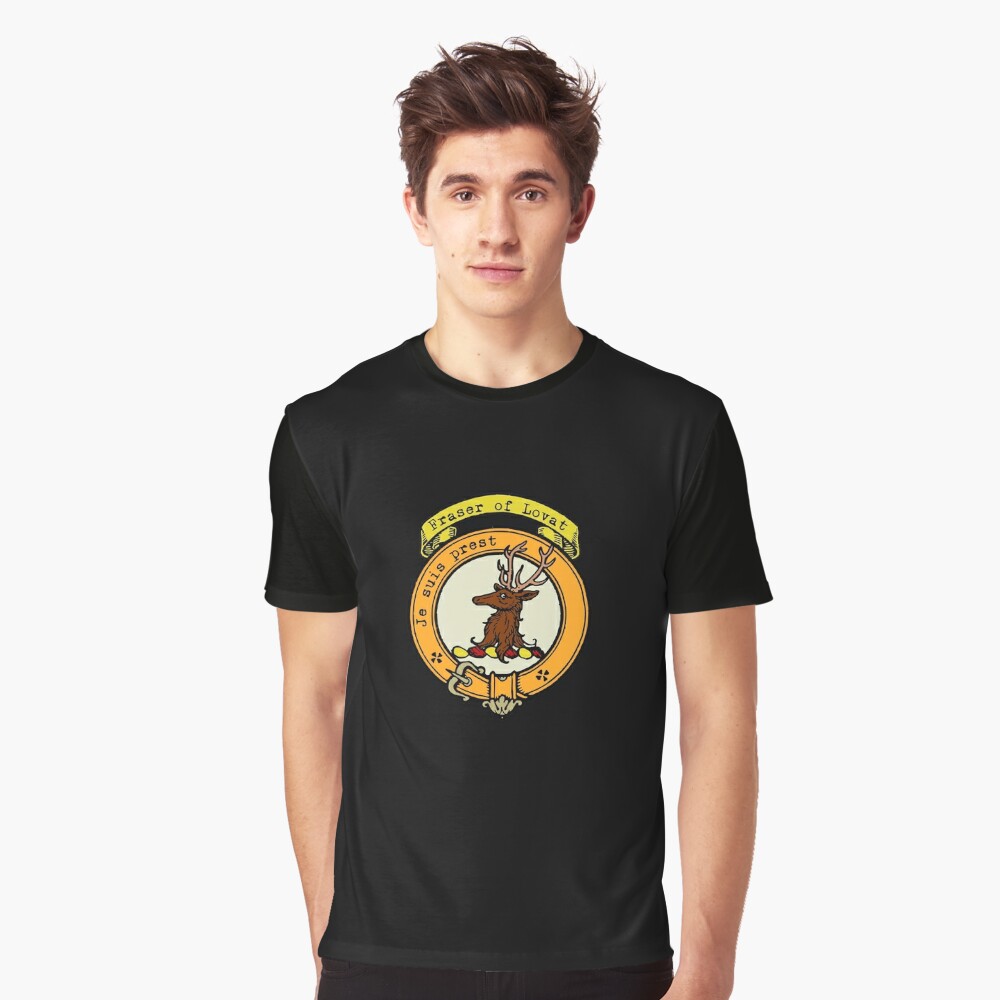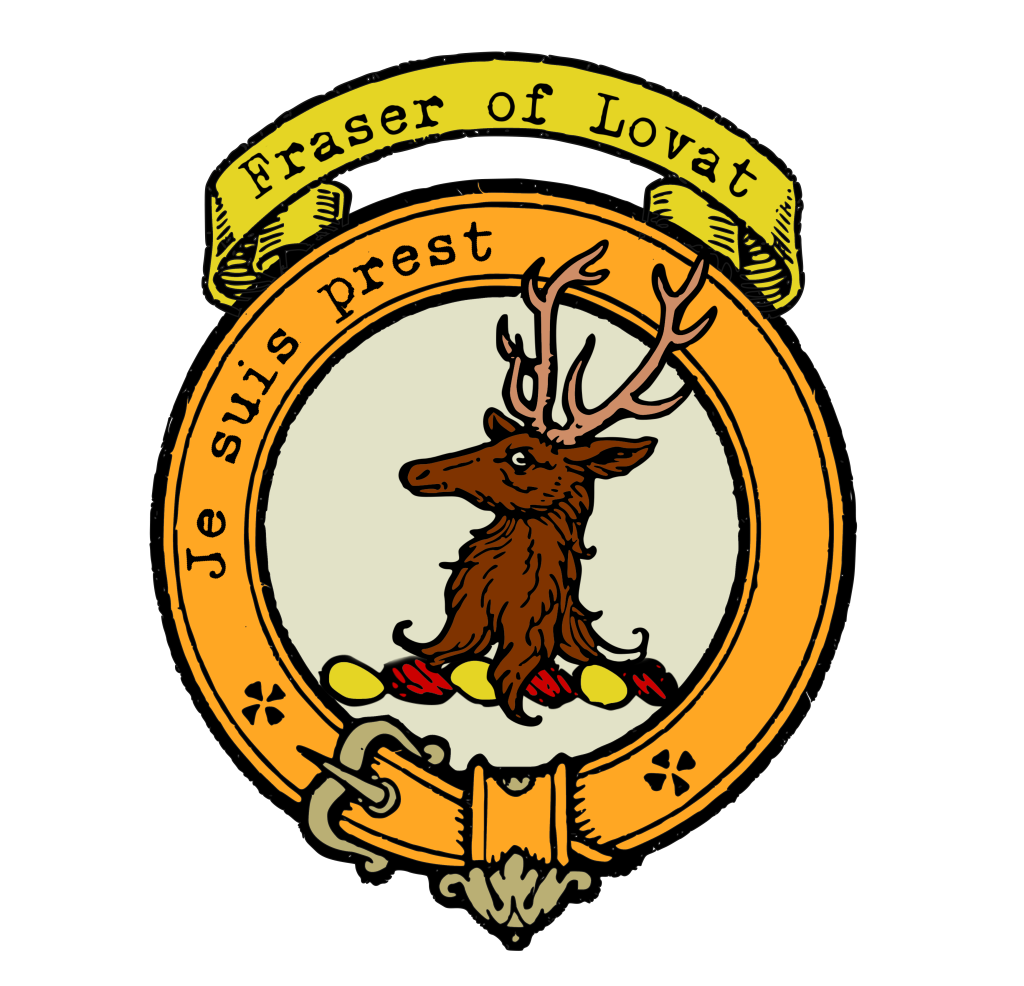Clan Fraser of Lovat
|
|
CREST: A buck’s head erased Proper MOTTO: Je suis prest TRANSLATION: I am ready VARIATIONS: N/A |
| The Fraser clan’s roots trace back to Sir Simon Fraser, brother to Sir Alexander, who held the prestigious position of chamberlain in the court of Robert the Bruce. It is believed that Sir Simon Fraser’s marriage to the heiress of Bisset lands near Beauly played a pivotal role in the clan’s settlement in this picturesque region.
The earliest recorded connection between the Frasers and the Lovat lands dates back to 1367 when Hugh Fraser was titled ‘dominus de Loveth et portionarius de Ard,’ signifying his role as the lord of Lovat and a portioner of Ard. The Gaelic patronymic ‘MacShimi,’ meaning ‘son of Simon,’ was a testament to their lineage and was in use as early as the fifteenth century. |
|
 |
|
| Purchase @ Redbubble | |
| The Frasers of Lovat weren’t merely landholders; they also held significant political sway. In the mid-15th century, Hugh Fraser was granted a peerage, becoming Lord Lovat or Lord Fraser of Lovat. This was a pivotal moment in the clan’s history, solidifying their status in the Scottish nobility.
Around 1511, the Fraser chiefs established their seat at Beaufort Castle. While the current castle is relatively modern, it occupies the same hallowed ground as earlier strongholds that bore witness to Scotland’s tumultuous history. The Frasers of Lovat were no strangers to clan feuds and epic battles. Perhaps one of the most memorable clashes occurred in 1544 when they engaged in a fierce and bloody conflict with the Macdonalds of Clanranald, resulting in the infamous Battle of Blar-na-leine or ‘the field of shirts.’ The battle, named for the Highlanders’ removal of their heavy plaids during the heat of battle, was a stark reminder of the clan’s martial prowess. As the Fraser family flourished, they established numerous cadet branches, including the Frasers of Reelig, Inverallochy, Fingask, and others. These branches contributed to the clan’s enduring influence and legacy. The clan’s involvement in the Jacobite cause during the Forty-five Uprising saw them muster support for Prince Charles Edward Stuart. However, this allegiance came at a great cost, with the Frasers suffering heavy losses at the Battle of Culloden. Simon Fraser, the eleventh Lord Lovat, paid the ultimate price, being executed in London in 1747. Despite the devastating loss, the Fraser legacy lived on. Simon Fraser’s son formed the 78th Fraser Highlanders in 1757, which played a significant role in various conflicts, including the American War of Independence. In 1837, the peerage of Lord Lovat was restored to a cousin, Thomas Fraser of Strichen. In the late 19th century, Lord Lovat raised the Lovat Scouts, who saw service in the Boer War, World War I, and World War II. MacShimi, a distinguished commando leader, was awarded both the Distinguished Service Order and the Military Cross for his valor. |
|
Citations:
|
|

